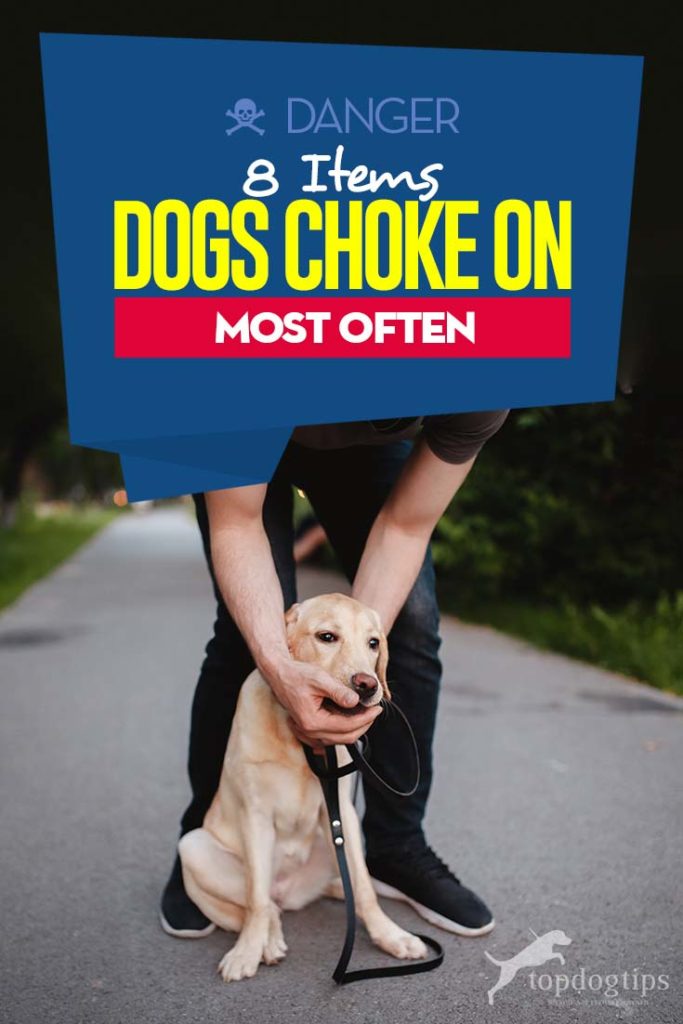Many things that your dog is interested in chewing can get stuck in their throat and choke them, harm their intestines, or lead to emergency surgery. Supervising a dog that's chewing on anything is the only way to prevent this, but it's not always possible. Here are some of the items dogs choke on most often, so you can avoid them.
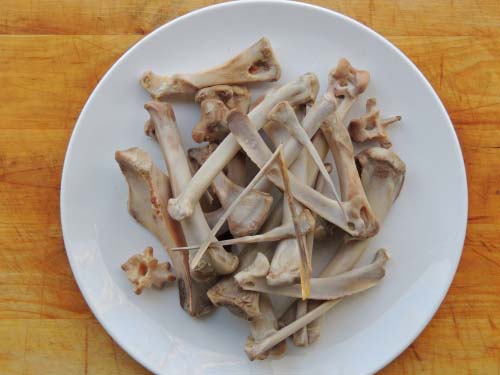
1. Cooked Bones
A bone is commonly used as a symbol on food bowls or dog houses. But paradoxically, bones can be dangerous to dogs to eat or chew on, and even more so if they're cooked bones. They often taste like meat, so your dog will rush to swallow them, which results in injuries and can even be fatal in some cases.
Cooked bones are prone to breaking. The pieces of a broken bone are sharp and will cause choking, as well as perforations or obstruction of the esophagus. Even with any other recreational bones for dogs, the two rules of thumb vets warn about is (a) pick the right size, and (b) supervise the dog while they're chewing on it.
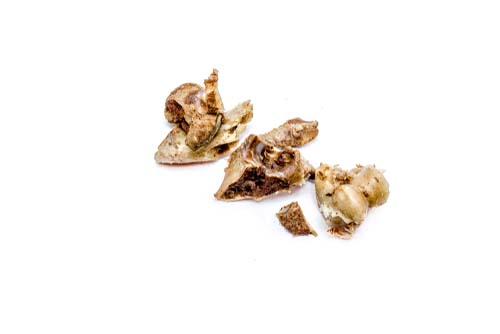
2. Gristle
Another thing which tastes like meat but which can cause your dog to choke is gristle. We all know that hard inedible part of meat which we need to leave on the side of the plate because we cannot chew it. Even though your dog has sharper teeth, they won't be able to chew through this neither.
Gristle can be a dangerous food for a dog because it can easily get stuck in their throat and stay there. Never give your dog gristle and be very careful not to let it fall off the table so your pooch doesn't consider this to be their treat.
https://www.facebook.com/dublinvethospital/posts/2264009607019883
3. Chew Toys
Dog chew toys, as their name confirms, are made for dogs to chew on. While most of them will be safe, your task is to find the appropriate ones for your dog, style- and size-wise. Some designs of dog chew toys are far more dangerous, too.
Look at labels for what breed, size and age the toy is recommended for. If the toy is suitable for a small breed (e.g. Pug), it is not necessarily good for a large breed (e.g. Golden Retriever), because they will be able to accidentally swallow it.
Size is the most important feature of a chew toy to consider; it should be too big to fit behind a dog's teeth. Additionally, some dog breeds have a stronger bite. Toys for big chewers should be rougher and harder than those for the smaller breeds with weaker bite force.
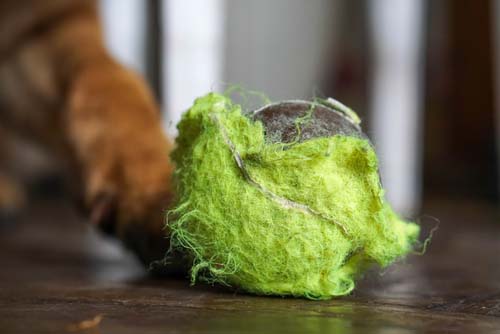
4. Balls
Balls are fun for dogs to play with outdoors, but they can also be a choking hazard. Similar to chew toys, if they are too small, they can get stuck easily in a dog’s throat.
Some balls may also change in shape and deflate, then pass through a dog’s mouth, and expand in their throat later. A small ball like a tennis ball can completely block your pet’s air passages and leave them without oxygen.
Always be careful about choosing the correct size of the ball for your pet. If the ball is too big to swallow and too hard to break, it will be perfect for outdoor adventures.
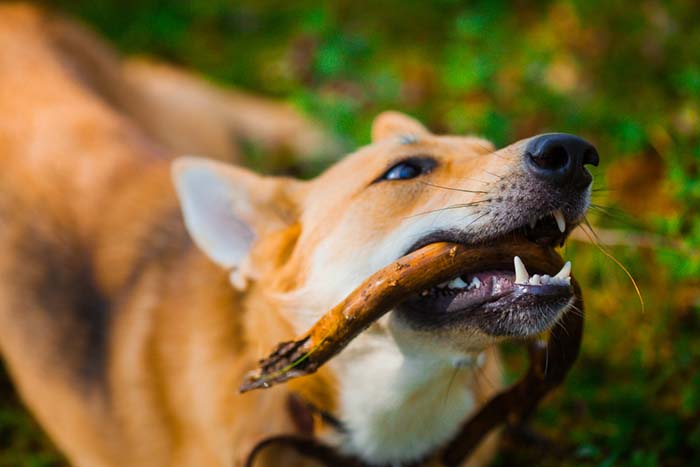
5. Sticks
An object most commonly presented in movies as a perfect toy for dogs but that can be dangerous to dogs is a stick. Giving your dog a regular wooden stick which can be found in the park to chew on without supervising is not a good idea.
Wood can easily break, especially dry wood, found everywhere in the autumn. Similar to cooked bones, it can splinter in a dog’s mouth, causing cuts and laceration. Bigger pieces can get stuck somewhere in-between and block the air passage.
Replace the wooden stick with some toy or a bigger ball that can be thrown around without the fear of your dog choking on it.
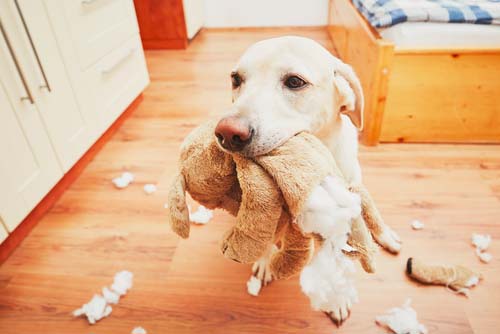
6. Children’s Toys
Children’s toys come in different shapes and sizes. And while your child might know not to swallow the toy, your dog might not. They will look like the toys a dog commonly plays with but smaller, and they will instinctively try to chew on them. If the toy is small enough to pass behind a dog's teeth, it can result in a bad ending.
It is difficult to see everything and to devote your attention constantly to both kids and dogs. You cannot always choose the toys which are interesting for a child and perfectly safe for dogs. Training plays a crucial part when it comes to this. Teach your pet from the youngest age that they should play only with the objects given directly to them.
https://www.facebook.com/christina.young.963/posts/10215257856981326
7. Plastic Bags and Wraps
Plastic bags and wraps can be particularly dangerous for a dog. Even if you don’t give it to your pet intentionally, if they find it on the floor or flying around because they are light, it will seem like a great toy to catch and chew on.
Plastic items can cause choking because it's difficult to swallow them in one bit, and they may get stuck in between a dog's mouth and esophagus.
To avoid this, as soon as you bring groceries home, remove all plastic wraps and bags, and either throw them away or hide them somewhere where a dog would never look.
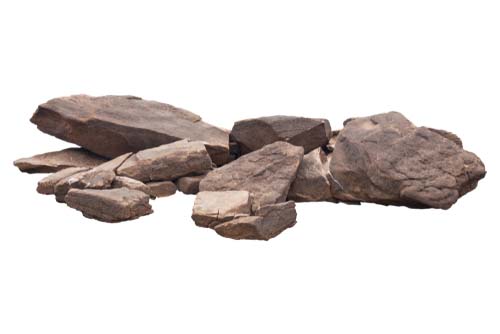
8. Rocks
As silly as it sounds, small rocks can also be the cause of choking accidents. Whether because rocks remind your dog of toys and balls, or because it is something new and undiscovered, a dog may be inexplicably drawn to play with a rock and even swallow it.
Rocks can cause choking, but more commonly they will end up in a dog’s stomach. Naturally, they're not digestible and a dog will need surgery to remove a rock.
This is another situation where training your dog will go a long way in preventing such accidents. If you teach your pup that stones are bad things for them, the dog will quickly find something else to play with.
Summary
Dogs like to chew things and even try to swallow them sometimes. However, this can very dangerous and lead to choking accidents, or some other external and/or internal injuries.
Some of the most dangerous items for dogs to chew on are cooked bones, balls, sticks and plastic wraps. The best prevention of all choking accidents in dogs is supervision and good training. When you teach your dog when to drop things and what not to touch, you will be able to let them play carelessly without the fear of choking.
READ NEXT: What to Do If Dog Is Choking?


